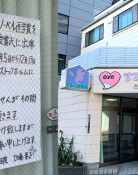Blockbuster Korean films perform poorly even in summer
Blockbuster Korean films perform poorly even in summer
Posted September. 05, 2023 08:22,
Updated September. 05, 2023 08:22
"I was upset and heartbroken by the failure of the movie 'Ransomed,' but I will humbly accept the outcome. I had high hopes, but the reality was different. I'll write this experience in my acting review note for wrong answers and strive to improve myself for the next great films."
Ha Jung-woo, who celebrated his 20th anniversary as an actor this year, said this when he shared his thoughts on the poor summer movie theater situation in the wake of the pandemic. His movie "Ransomed," in which he played a main character, was released on August 2 and only attracted 1.05 million moviegoers. It was a major production that cost more than 20 billion won to make, with 70% of the production shot on location in Morocco and Italy. Consequently, the break-even point was high, requiring about 6 million viewers. The actor starred in "Along with the Gods: The Two Worlds" (2017) and "Along with the Gods: The Last 49 Days” (2018), the first Korean film series that drew more than 10 million moviegoers successively. He has been regarded as an actor known who delivers box-office hits with many other successful films. However, even the actor wasn't exempt from the changing landscape of movie theaters after the pandemic.
The summer season, from July to August, traditionally serves as a peak period for movie theaters. With the world transitioning into the endemic phase of Covid-19, this past summer witnessed the release of several major Korean films, including "Smugglers," "Concrete Utopia,” "Ransomed," and "The Moon," director Kim Yong-hwa's first new film in five years following the mega-hit "Along with the Gods" series. The film industry held high hopes that these large-scale productions would rejuvenate the cinema scene; however, among the four releases, only “Smugglers” managed to break even. Director Kim Yong-hwa's "The Moon," boasting a production cost of 28 billion won, needed to draw 6 million viewers to reach the break-even point, but it attracted only 510,000, resulting in a box office disappointment.
The situation is similar for small and medium-scale films with production costs under 10 billion won. Among all the small and medium-scale movies released this year, only one film managed to break even: the horror film "The Ghost Station," which achieved this feat with just 200,000 viewers, thanks to its low budget.
While there have been various analyses of the decline in Korean cinema, one prominent factor is the rising standards of audiences, a trend attributed to their increased exposure to OTT services like Netflix during the pandemic. With the cost of a movie ticket roughly equivalent to a monthly subscription fee for such services, it has become important for audiences to weigh whether a movie is worth watching in the theater.
As movie production and releases were delayed during the pandemic, many star actors, high-profile directors, and crews turned to OTT platforms. Consequently, there is now a plethora of star-studded OTT productions featuring compelling narratives and spectacular direction. This shift means that audiences no longer need to visit theaters exclusively to see 'movie stars' who traditionally appeared only in cinema. Furthermore, the vast majority of new releases find their way onto OTT platforms shortly after leaving theaters. Consequently, some individuals are now saying that unless a movie offers a truly exceptional theater experience, they prefer to wait and enjoy it on OTT.
In the end, the key to reviving Korean cinema lies in delivering high-quality content. The public has grown increasingly critical of predictable plots, clichés, and acting that appears to be self-replicating. I hope that next summer's movie theaters will be filled with films that showcase the true potential of Korean cinema. Let's also hope that experienced actors won't have to open their review notes for wrong answers again.
Headline News
- South Korea’s migrant population surpasses five percent
- U.S. acting ambassador affirms joint exercises with South Korea
- China and Japan escalate dispute over naval radar incident
- Uptempo claims D3 Seoul basketball championship convincingly
- Democratic Party pushes insurrection court despite opposition warnings







